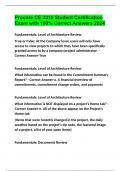Samenvatting
English summary of Translational Genomics containing many pictures
This document is written in english. It contains summaries of all lectures given in the course Translational Genomics. It also includes many pictures for better understanding. The lectures are about genome architecture, determination of variations/mutations, mandelanian inheritance, microsatellite ...
[Meer zien]













